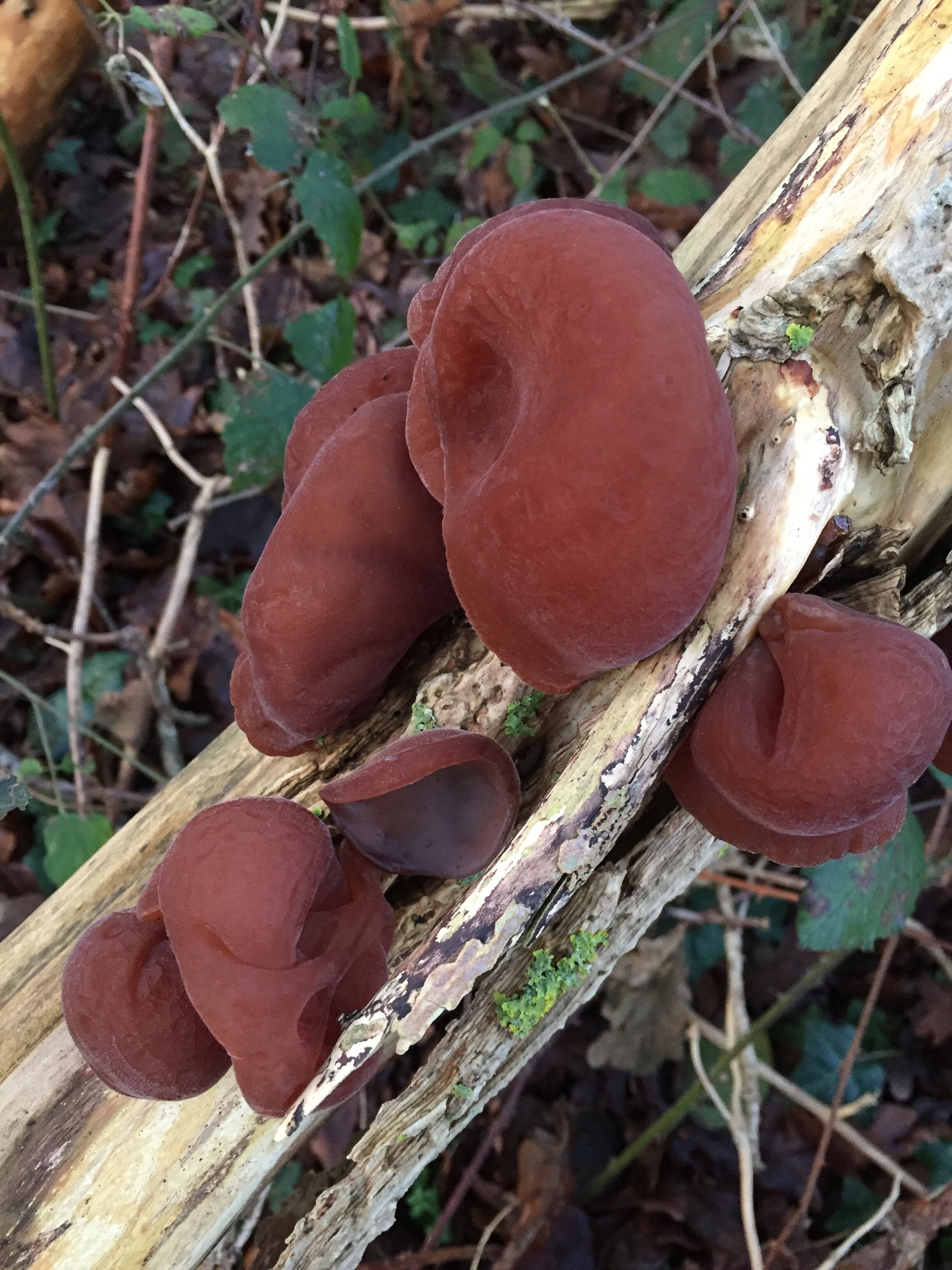Jelly Ear, Nettle tops & Herb-root Broth
This recipe is an earth remedy derived from an American first people Healing Arts formula described as providing a ‘meal in itself’. A tasty and warming early spring tonic soup which enlivens, stimulates and boosts circulation.
At the end of February and beginning of March, as the promising new growth of Stinging nettle appears, and before sap begins to rise in the trees, this is also the last opportunity to dig up herb roots. At this opportune mid-season somewhere between Winter and Spring, a forager’s basket makes for interesting fare.
Ingredients:
1/2 handful of fresh or dried Jelly ear fungi (Auricularia auricula-judae)
1 handful fresh Shitake mushrooms (Lentinula edodes)
500ml Vegetable or Chicken stock
500ml water (approx. – as required)
Small handful of chopped fresh Dandelion root (Taraxacum officinale)
Small handful of chopped fresh Parsley root (Petroselinum crispum)
20 cm length of chopped fresh horseradish root (Armoracia rusticana)
Thumb size knob each of crushed fresh ginger (Zingiber officinalis) & turmeric (Curcuma longa) roots
250g organic split Fava beans
1 large chopped onion
1 Tablespoon dried Pepper dulse Seaweed
½ teaspoon crushed black peppercorns
2 tablespoons organic apple cider vinegar
2 handfuls fresh Stinging nettle ‘tops’ (Urtica dioica)
Method:
Sauté the onions in a small knob of coconut oil or butter
Add all the chopped and crushed roots and peppercorns and cook for a few minutes stirring with the onions
Add the mushrooms and stock into the saucepan
Add the Fava bean, seaweed and Stock. Stir and bring to simmering.
As required, add more water and the nettle tops
Cover and simmer for 40minutes
Remove from heat and stir in the vinegar
Liquidise the soup (add more water if required)
Serve with chopped fresh parsley and a dessertspoon of fresh yoghurt.
Depending on how you like your soup these quantities serve approx 4-6 large servings of rich thick consistency which can be diluted as preferred.
*NB as with all herbs and ingredients, check with a specialist if you require information regarding contra-indications.
About the Herbs:
Most of these ingredients are herbs that are both included within herbal medicine practice, and also nutritionally valuable – thus falling into the interesting category of Nutraceutical ie: Medicinal and Nutritional.
Auricularia auricula, commonly known as Jelly Ear and Wood Ear (or Cloud Ear to the Chinese and in Japan) is a tree fungus often found growing on the limbs of the Elder Tree. Gather this herb to cook either fresh or dehydrate to store. According to ‘The Fungal Pharmacy’ (Robert Rogers) this species reduces blood pressure and cholesterol levels.
Lentinus edodes – Shitake mushroom is a traditional Chinese medicine reputed to be a powerful natural immune stimulant and restorative with antiviral and cholesterol lowering properties. Widely available to purchase either fresh or dried.
Taraxacum officinale – Dandelion root is detoxicant and a pancreatic regulator containing vitamins A, B &C and rich in nutrient minerals. It combines well with seaweed for absorption of nutrient minerals.
Petroselinum crispum – Parsley root dug fresh is aromatic and succulent. It is a warming gastric tonic containing vitamins C & E, Iron, Folic acid, and is rich in minerals including calcium, potassium and silica.
Armoracia rusticana – Horseradish root. Horseradish grows in the wild, along verges and waysides and it is also easy to grow at home outside in the herb patch. Dig the root and use fresh in small amounts as an alternative to Cayenne. It is a warming circulatory and digestive stimulant containing Vitamins B & C and Selenium.
Zingiber officinale – Ginger root can be grown at home inside from a small bought rhizome planted with the nodule just exposed. It will grow quickly in the summer producing attractive stems and leaves. Once they die down in the winter, this is the time to harvest your root by digging it up to split for use or to replant. Just ensure the rhizome section you replant has a productive nodule or ‘eye’, from which new growth will emerge. Ginger is a gentle circulatory stimulant, aiding absorption from the stomach to the rest of the body.
Curcuma longa – Turmeric root can be grown in the same way as Ginger, at home in pots on the windowsill from fresh rhizomes. It is a digestive anti-inflammatory herb which improves the action of the Liver especially if taken with Black Pepper which augments the efficacy of turmeric.
Osmundea pinnatifida – Pepper Dulse seaweed is often described as the truffle of the Sea. It has a popular tasty flavour and is also included as a ‘spring medicine’ at the conclusion of Winter. Available to purchase dried, it also grows on the rocky coast of the UK for fresh gathering. Seaweed is a rich source of minerals and Iodine, supporting healthy thyroid function.
Piper nigrum – Black Pepper is a warming digestive spice. It aids absorption of herbal and chemical medicines and because of this action has become ubiquitous as a condiment at mealtimes.
Urtica dioica – Stinging Nettle contains many vital vitamins and minerals including Iron, Silica and Calcium. It is a blood tonic and strengthens our natural resistance. ‘No plant is more useful in domestic medicine’ – Hilda Leyel.
Many of the ingredients used in this recipe are interchangeable according to availability and flavour and this is a just one way of combining foraged materials with home grown veg and herbs. The interesting interchange between the ingredients is very much food for thought as we discover how plants can be cooked and eaten together to enhance both their and our potential.
*Please note: This content is for information only and doesn’t constitute nutritional or medicinal advice.










